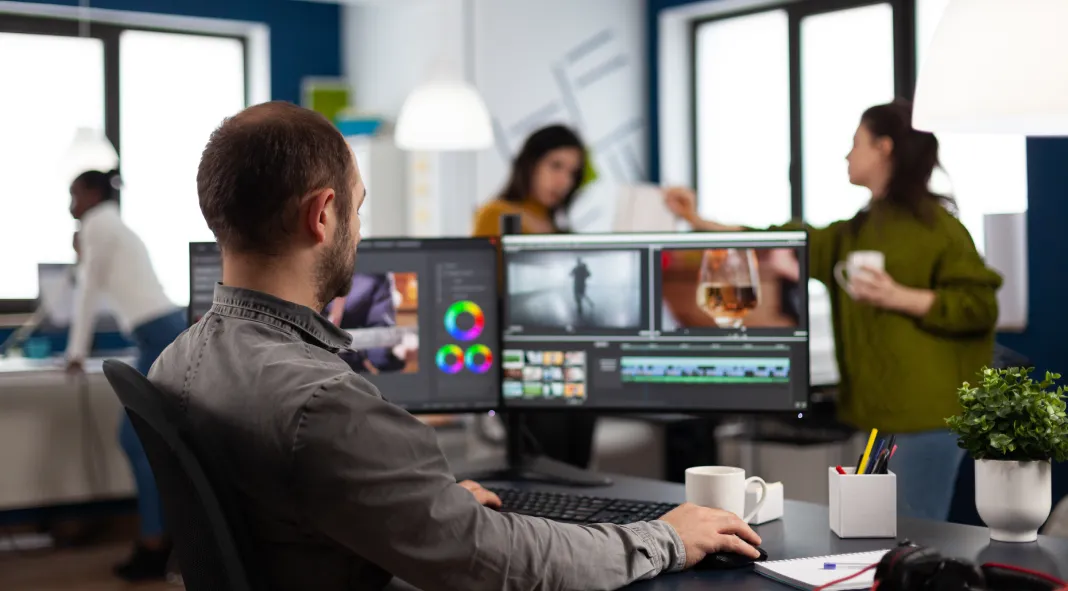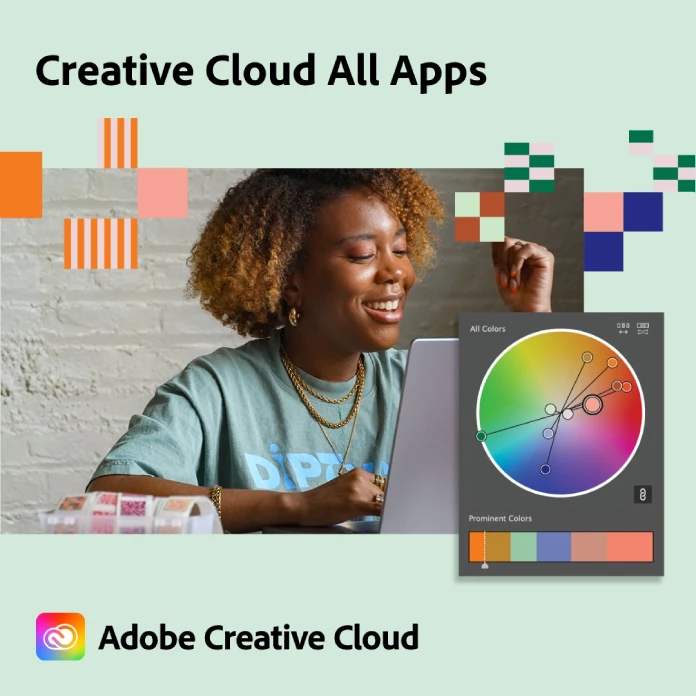This post contains affiliate links. We may earn a commission if you click on them and make a purchase. It’s at no extra cost to you and helps us run this site. Thanks for your support!
Let’s talk about monitors. As a graphic designer, you aren’t just staring at a monitor; you’re peering into your creative universe. It’s the portal through which your ideas take shape, where colors dance, and where meticulous details come to life. Think about it: your screen isn’t just a piece of hardware, it’s the foundation of your workflow, the silent partner in your artistic process. The wrong monitor? Well, that’s like trying to paint a masterpiece with a dull brush or sculpting with clay that keeps crumbling. It can lead to frustrating color mismatches, blurry details that sabotage your precision, and simply an inefficient workspace that hinders your creativity. Finding the right monitor, however, is transformative. It’s about seeing your designs with the clarity and accuracy they deserve, it’s about having the screen space to comfortably juggle your various applications, and it’s about reducing the eye strain that can sneak up on you during those marathon design sessions. Choosing a screen can feel overwhelming with all the tech jargon and options. So, let’s cut through the noise together and unpack what actually matters for a graphic designer like you. We’ll look at the crucial elements – from color accuracy to resolution, panel types, and even those pesky ports – all to ensure you find the pixel-perfect partner for your creative journey. Trust me, investing in a great screen is investing in yourself and your work. So, are you ready to find your perfect match?
The Pixel-Perfect Palette: Choosing the Right Monitor for Graphic Design
So you’re a graphic designer? Awesome! You’re creating, shaping, and bringing visuals to life. You need a screen that can keep up. But what does that actually mean? Let’s break it down.
First Things First: What Really Matters?
Forget the buzzwords for a second. What are your pain points? Is it color accuracy? Sharpness? Maybe space? We’ve all felt the frustration of a color mismatch or not having enough screen real estate. Let’s get real:
- Color Accuracy: The Holy Grail
- You know the drill. You spend hours perfecting a color, but it looks totally different on another screen? Ugh. That’s a color gamut problem. Think of it like a paint palette. You want a monitor that can display all the colors accurately.
- sRGB? DCI-P3? What’s the deal? sRGB is your standard color space, great for web design. DCI-P3? It’s wider, covering more colors (ideal for print, and video). What do you work on the most? Let that guide your choice.
- Factory calibration? This can help with color accuracy out of the box. Are you gonna be calibrating yourself? Or is plug-and-play more your speed?
- Sharpness: Resolution Matters
- Resolution? It’s all about detail. A low-res screen can make your designs look blurry. A good 4K screen (3840 x 2160) or even 5K will give you crisp, clear edges. Wouldn’t you want to see every detail of your work?
- Pixel density? Higher density means more pixels per inch. That means sharper visuals. It’s like the difference between a grainy photo and a high-definition one. Which do you prefer?
- Panel Type: IPS, OLED, or VA?
- IPS (In-Plane Switching): Think of these as the workhorses. They’re solid all-around, with good color accuracy and wide viewing angles. Have you worked on an IPS monitor before?
- OLED (Organic Light Emitting Diode): These are the rock stars! Amazing contrast, deep blacks, and vibrant colors. Do you need that extra punch?
- VA (Vertical Alignment): These are kind of a middle ground. They have better contrast than IPS but may not have as wide viewing angles. What’s your priority?
- Screen Size: How Much Space Do You Need?
- 27 inches? 32 inches? Ultrawide? It all depends on how you work. Need to have multiple apps open? Go bigger. But what’s comfortable for you?
- Multiple monitors? Maybe a dual setup is better for your workflow. What’s your desk space like? Have you thought about how multiple screens fit into your space?
- Ports: The Connectors That Connect You
- DisplayPort? HDMI? USB-C? You need the right ports for your computer. Do you need a lot of connections?
- Thunderbolt/USB-C with power delivery? If you use a laptop, one port for both video and power can clean up your desk. Are you someone who values a clean setup?
Current Contenders: Let’s Talk Specifics
Okay, now let’s get into some specific screens. These are all killer options right now, but each has a slight edge depending on your needs.
- Apple Studio Display (27-inch, 5K): The Apple Ecosystem Pick
- Pros: Seriously great color accuracy, 5K is super sharp, seamless with macOS, beautiful design.
- Cons: It’s expensive and limited to Thunderbolt/USB-C. Do you live in the Apple world?
- BenQ PD3220U (31.5-inch, 4K): The Pro’s Choice
- Pros: Fantastic color accuracy, big screen, hardware calibration, lots of ports.
- Cons: It’s expensive too and not as sleek. Are you looking for a workhorse?
- LG UltraFine 27EP950-B (27-inch, 4K OLED): The Visual Master
- Pros: OLED panel delivers amazing blacks and colors, color accuracy is top-notch, sleek design
- Cons: OLEDs are expensive, and can suffer from burn-in if static elements are displayed for extended periods. Do you need the best picture quality?
- Dell UltraSharp U2723QE (27-inch, 4K): The Dependable All-Rounder
- Pros: Great color, good ergonomics, lots of ports, and it’s more affordable.
- Cons: It’s an IPS panel, so it won’t have the contrast of an OLED. Do you need something reliable?
- ASUS ProArt PA279CV (27-inch, 4K): The Budget Conscious Pick
- Pros: Solid color accuracy, ProArt features, good adjustability, affordable price.
- Cons: Again, it’s an IPS panel. What’s your price point?
So, Where Do You Go From Here?
I know it’s a lot to take in, but here’s the deal:
- Prioritize. What’s most important for you? Color accuracy? Sharpness? Size?
- Read reviews. Look for in-depth reviews from trusted tech sites and users. What are they saying about the monitors?
- Consider your budget. There’s a great screen at every price point. What are you willing to invest?
- Think about your workflow. How do you use your tools? Are you looking for a single screen or multiple?
- Do some tests. If possible, try a monitor in person or see if you can try out some display models in a store.
Choosing a monitor is personal. It’s about creating the ideal workspace for your needs. Don’t settle for something that feels “good enough”. Your creative vision deserves a screen that does it justice.
Header image © by DC Studio (via Adobe Stock). Feel free to browse WE AND THE COLOR to find other inspiring topics.
Subscribe to our newsletter!








